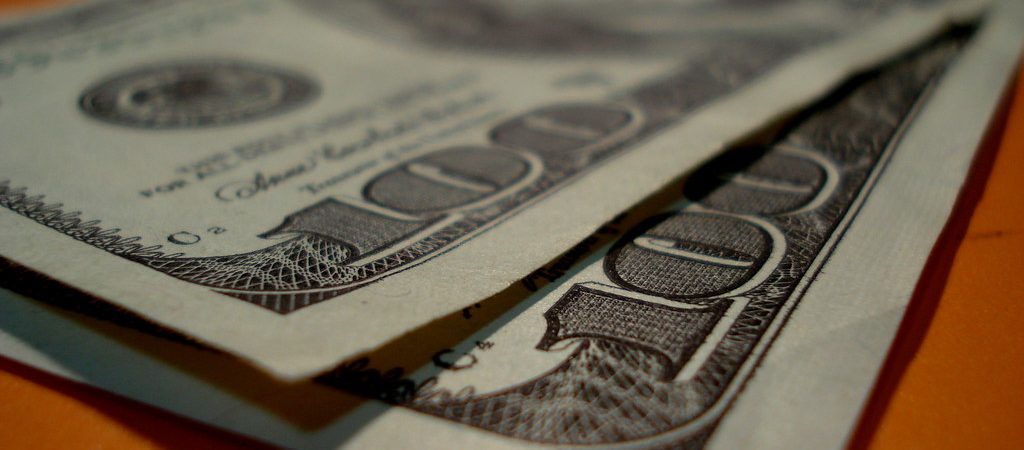Everything you need to master your 2025 fantasy football auction draft, right here.
Sections:
A. The Advantages of This Guide Vs. Everywhere Else
B. The Three Types of 2025 Fantasy Football Auction Draft and Strategies for Each
C. Common Fantasy Football Auction Myths Dispelled
D. 2025 Fantasy Football Auction Values Chart
Section A: The Advantages of This 2025 Fantasy Football Auction/Salary Cap Guide Vs. Everywhere Else
I’m a busy man. While you were enjoying your Summer, I was mock auctioning. While you were watching the NBA and NHL Finals, I was mock auctioning. While my children were taking their first steps in the room next to me, I was mock auctioning.
I’m a busy man. I didn’t say I was a proud one.
The whole point is: We have actual data created by actual humans, which is critical because bots cannot do auction right, at all. Why is that important? Because almost every other site just puts their fantasy football projections into an algorithm that spits out a dollar amount. This robotic approach creates auction values charts that, frankly, don’t pass the smell test. For instance: A lot of sites are listing QB13 and TE 13 at more than $1 .This makes zero sense, the opposite of sense, it makes negative 1,000 sense. You shouldn’t even be rostering a backup QB or TE, most of the time. In the extremely rare situations where you do, you don’t need to pay more than $1 for them because that’s how auctions work: Once everyone has their QB or TE, no one really wants to bid on another. It’s a dumb oversight that could be easily fixed by simply looking at actual auction data and applying a small bit of thought. But fantasy football snake drafting advice is the bread-and-butter of fantasy football advice sites, so they barely give fantasy football auctions an afterthought. This leads to really dumb stuff like, as mentioned, listing TE13 for more than $1. I’m not going to call out any site specifically, but I find it frustrating.
The other advantage this guide provides over all the others is the product of experience. Listen carefully when fantasy football pundits are giving auctioning advice: They speak in terms of strategies that “might” work out and they list fantasy football auction tips that have worked out for them “in the past.” That’s just referencing single points of data; in order to effectively make a fantasy football auction strategy that works every time, we need enough data to spot patterns.
This is why I’m always mock auctioning: I need to see many data points to spot the patterns. And now, in late July, I’m confident to say I finally have enough data to present three effective strategies, each tailored for how a fantasy football auction draft can go. Onward to Section B!
Section B: The Three Types of 2025 Fantasy Football Auction Draft and Strategies for Each
They say every fantasy football auction draft is different. Who’s “they”? Well, them, and these people, and those people over there, and this Sports Illustrated person. Heck, even AI says it. A lot of different people/robots, all saying every fantasy football auction draft is different. And they all have one thing in common:
They are all 100% wrong.
Let me show you why.
People get too used to trying to apply the lens of snake drafting to auctions, and that simply doesn’t work for a lot of things. For instance, I could say “Ja’Marr Chase will most likely go pick 1.01, 1.02, 1.03” and that’s a reasonably correct thing. But I can’t say “Ja’Marr Chase will go for $65, $66, or $67” with any amount of reliability: In our extensive mocks he goes from anywhere between $59-$73. That variability is what leads people to incorrectly decide that “each auction is different.” Yes, you don’t know which players will go for what, but that’s looking at individual data points. Remember, the Football Absurdity auction advantage is that we don’t look for data points, we look for patterns.
Regardless of who is going for what value, the key thing to keep in mind is that fantasy football auctions are what is called a “closed economy.” That means no money is going in or out: The money each manager has to start is exactly the amount of money in that economy and will remain so throughout the auction. That’s dead simple to analyze if we take a step back: Closed economies can only have three patterns:
- A medium amount of money is being spent throughout until there isn’t a lot of money left and the value of players crashes.
- A lot of money is spent early until there isn’t a lot of money left and the value of players crashes.
- A relatively small amount of money is spent early on, in which case there is no value crash or else it is pretty tiny.
Do you see that? A small, medium, or large amount of money moves early: Knowing which one is happening in your drafts isthe key to predicting how the market will react later, and is the crux of us forming out 2025 fantasy football auction draft strategies.
Let me lay it out plainly: Every auction draft is not different. There are only 3 types of auction drafts:
- The first 15-20 players go for, on average, 10+% higher than their projected value
- The first 15-20 players go for, on average, around 5-10% higher than their projected value
- The first 15-20 players go for around their projected value, or sometimes a little less
That’s it. It’s pretty plain once you are looking for it, and spotting which type of auction you are in allows you to pivot to one of three strategies.
These are the strategies I have found most consistently effective for each type of auction:
Auction Type 1: The first 15-20 players go for, on average, 10+% higher than their projected value.
Strategy: If you see the top players going for ridiculous amounts, early, get in there and get a player you really want. Exactly one player. The projected value or the amount on your chart does not matter, just get in there and get one guy you love.
Then we wait. Really high early prices means there will be really great prices on tier B guys sooner than later. It has to: Taking more money out early means there will be less money available later. This is how a closed economy works.
The market cooling early means you can round out your team with really good players at around their projected value, or less. And, because you only got one expensive player before waiting, you can easily be “big bank” and muscle out a lot of other managers for the best players and deals once the market cools.
Plus, and this can’t be understated: Getting a top player is fun. Everyone loves to come out of a draft knowing they have a top-10 guy on their team. Which is why none of my auction strategies are ever “just wait until the top guys are gone.” You’re not grocery shopping on a budget, where finding value at every turn is key. If you don’t “pre-spend” on a good player, you destroy the advantage you gained by recognizing the early bidding patterns to predict future values.
Auction Type 2: The first 15-20 players go for, on average, around 5-10% higher than their projected value
Strategy: Get two great guys early, then wait for the crash to round out your team.
The “crash” is something that happens in about 90% of the auctions I’ve studied. Basically, once most managers have their studs, they are either not interested in/can’t afford the B-List players. The WR2s-3s, in particular, really cool off fast in most auctions. By getting exactly 2 great players early, then waiting to round out your squad with amazing value picks, you optimize using your auction insight.
“But Evan, what if the WR crash doesn’t happen?” Is a question I frequently get. The answer is simple: For Auction type 2 (and 1), it has to happen. If people are spending $5-$10 over projected values for the first and second round players, they have to spend $5-$10 less than projected at some point in time. Knowing and banking on this is the main auction strategy, as this is the most common early auction pattern.
If there’s discounts now, there will be discounts later on the players I really want.
Auction type 3: The first 15-20 players go for around their projected value, or sometimes a little less
Strategy: Get all the guys you can early.
Too many managers see early discounts on top players and assume they can wait for similar discounts on more affordable ones.
That. Is. Not. How. Closed. Economies. Work.
I’ve studied a lot of fantasy football auctions. Every single time the initial players all seem to be going for around projected value or even less, the market eventually corrects and the mid-range players all become impossibly overbid on.
For proof of this: Check out our 10-team all-human mock auction data chart. Look at the mid-range guys. Aaron Jones goes for an average of $7, but at least once he went for $13. That’s a huge difference, and nobody should be bidding double digits for Aaron Jones. But that’s what happens when not a lot of money is being spent early: In the mid rounds, managers with more money than good players get desperate for any starter.
This is why we want to “pre-spend” as much as we can when the early nominations are going for around projected value: The value train is going to come to a screeching halt at some point, and we want to have gotten off that train at some point before it does. In other words, we want to spend our money early before the B-list players become outrageously expensive.
So that’s my 2025 auction strategy list: Three strategies, watch how much the early players are going for then act accordingly.
Section C: Common Fantasy Football Auction Myths Dispelled
These are the mistakes I most commonly see newer players make that leads to them having a pretty mid team.
Myth: “I can just get a fantasy football auction values chart and bid until the price exceeds the numbers on my chart.”
This isn’t snake draft: You can’t just read from a sheet the next top player name and a number and call that a “strategy.” Well, you can, but you will end up with a team that’s just okay.
Why? Because most of the time, the exciting players go for more than the values listed on all these charts, including mine. So if you’re just shopping to get guys at projected value, the only players you will get are guys with so many red flags none of the other managers wanted to spend a dollar more to get them.
This is why I just wrote 2,500 words about fantasy football auction draft strategy: If a bot could do it, I would just make a bot that can do it and give you that bot. Because I love you.
But, because I love you, I’m telling you: Don’t be a bot. Recognize the early market trends and adjust your spending accordingly.
Myth: “If there are discounts now, there will be discounts later. So I should wait.” or “Because people are overspending now, every player is going to go for more for the entire auction, so there’s no point in waiting.”
This isn’t how markets work. They work in the opposite way: If not a lot of money is being spent early, a lot will be spent later. And vice versa.
Myth: “I should nominate a top player I want early. They could go for a bargain because the market isn’t set, yet.”
Every player someone wants will be nominated by someone, eventually. And the best players will be nominated early. So you don’t have to worry about nominating a player you want early: Some other manager will do the job for you. You should be nominating high $ players you don’t want early to get as much money out of the pot and quench the thirst of other managers who want a tall drink of a top-tier guy. Then when your desired players come up, you’ve minimized the chance of someone else outbidding you. This is 100% consistent: Nominating big names you don’t want will always take a chunk out of another manager’s budget., As opposed to nominating a guy you really want early, which usually doesn’t work out.
Myth: “I should nominate a kicker or a defense early.”
Just stop. I’m warning you. “Weaponized nominations” is the term I’m hearing a lot of fantasy football writers use, and it makes sense: Use your nominations to wear down other managers. So, along that metaphor, nominating a kicker or defense early is like showing up to a shootout with a spork.
Myth: “Nobody has good two-QB/Superflex auction draft strategies or tips.”
Fam: Get in here. We talk about 2-QB Superflex all day, and even scare up enough people for an occasional mock. The problem is, giving good Superflex auction advice requires knowing a lot about your specific league. So I can’t really make a guide. But if you come tell us about your league, we are happy to “get under the hood” and come up with a great plan.
Section D: 2025 Fantasy Football Auction Values Chart
Let’s be clear: These are not rankings. I don’t rank players because I don’t need to: Thousands of other fantasy football writers already do that for me, including some really smart people on this very site.
This fantasy football auction values chart is just what I feel like paying when I am in an auction. So when I say something like “Tee Higgins $17,” I don’t mean “Tee Higgins is going to get you $17 worth of points, boop-bop-beep I am a robot.” I mean “Tee Higgins is good, but he’s a WR2 and there should be a market crash somewhere around there. So I don’t want to pay up for him, if he goes for below projected I’ll grab him. If not, I’ll pass and keep waiting for the crash to happen.”
Because this is Football Absurdity, and we do auction/salary cap draft strategy differently, here.
I’m including the data from our all-human mocks, but I’m going to tuck those away so there’s no risk of you getting analysis paralysis. Feel free to expand those columns for a better understanding of the fantasy landscape by clicking the triangles at the top of the columns.
Evan Hoovler’s 2025 Fantasy Football Salary Cap/Auction Values Chart PDF
Evan Hoovler’s 2025 Fantasy Football Salary Cap/Auction Values Chart CSV
If you want to mock with us, sub our Youtube. We go live and walk through a mock auction/salary cap draft every Sunday at 5:30 CST.
Click here to see Evan’s solution for deciding between two players who are ranked the same.
Happy bidding!



